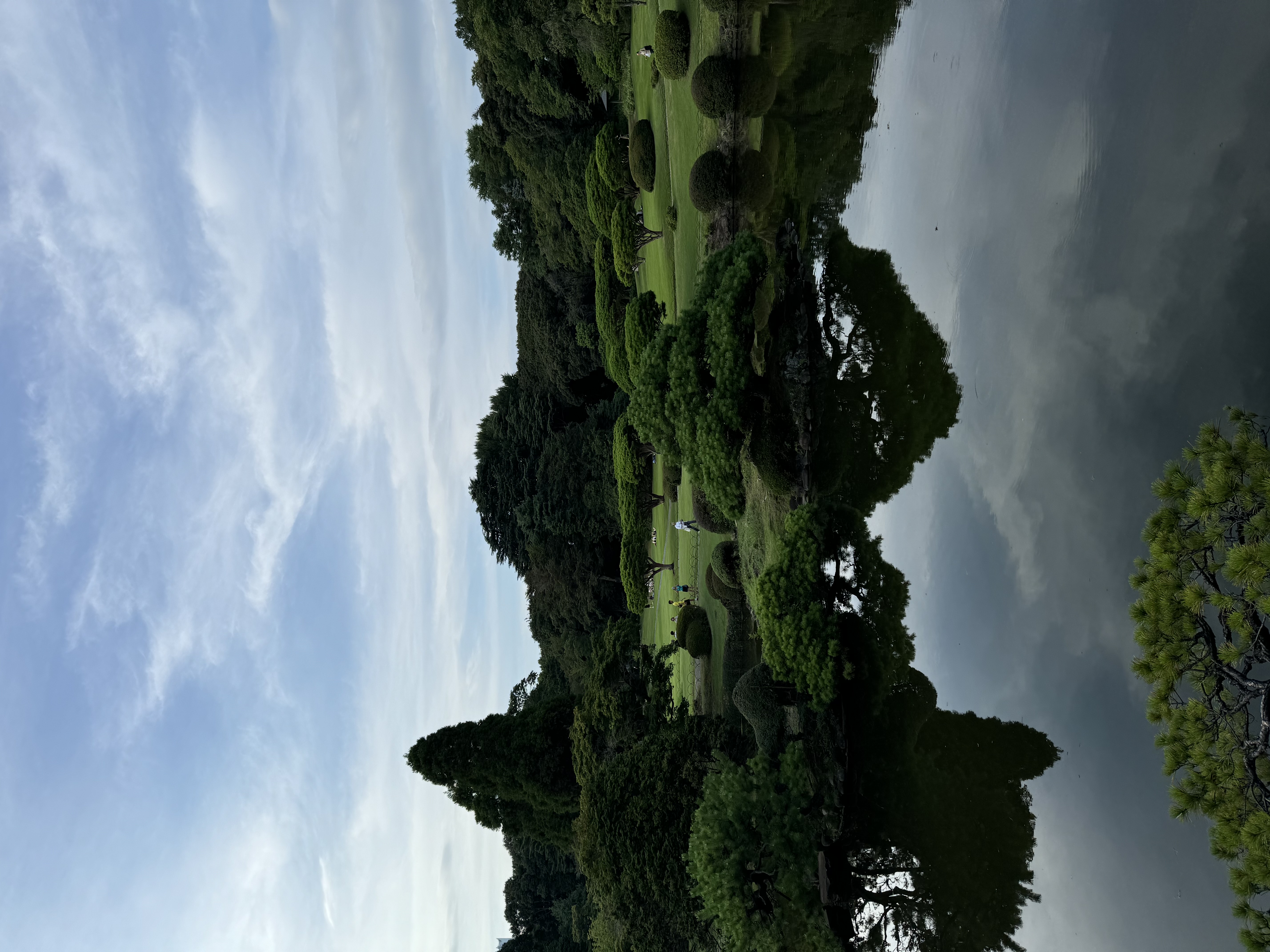My Guide to Tokyo

After living in Tokyo for a few months, I got to visit many areas of the city. Still, in many ways I've barely scratched the surface. Here’s what I’ve learned about what each area of the city is like.
Sendagaya (Shibuya)
This is the area where I lived. It’s a quiet neighborhood full of mostly 4-5 story buildings, as well as the Japan National Stadium. The architecture is understated and elegant. Also, the Sendagaya stop lies on the Chuo line, which is quite convenient, and is walking distance from both Shibuya and Shinjuku city centers, especially Shinjuku. Not too much to see here, but it was a nice place to live.
Yoyogi (Shibuya)
Yoyogi is a great area to explore, and underrated in my opinion. Not as many tourists as you would expect given its proximity to Harajuku and Shinjuku. Yoyogi park is a nice city park, and Meiji Jingu is a large shrine that you should try to visit in the mornings when it is less crowded. It’s always nice to find trees and quiet within a big city, and Yoyogi provides plenty of that. The area near Yoyogi station is also quite nice. There is a small area of warmly lit shops nearby including Okonomiyaki and Italian food, as well as a street to the south with several vibey-looking restaurants.
Ginza
This is probably an area that needs little introduction. It’s famously the Western-style shopping district in Tokyo, featuring the 12-story Uniqlo flagship and many other stores. Visit the Ginza Six rooftop for a nice (and free) view of Tokyo Tower and the surrounding areas. Personally I find it a bit over-commercialized and there aren’t too many good food options. The notable exception is Bombay Sizzlers, which serves amazing Indian food.
Takadanobaba
Apparently this place is colloquially called “baba,” which I think is much less fun to say than “takadanobaba.” I didn't find too much besides a few Chinese restaurants, but the JAZZ SPOT here is supposedly a great jazz bar, so I’m hoping to check it out one day.
Roppongi
Roppongi is like Ginza but even more Ginza. It’s all new development with Western-style apartments and shopping malls. Honestly a very nice place to be if you are looking for an upscale experience. Plus, it’s walking distance from Tokyo Tower. The Mori Art Museum was somewhat interesting, but the Tokyo City View in the same building is probably skippable. Apparently the Gonpachi Izakaya in Roppongi is where they filmed Kill Bill, so I’d like to check it out sometime.
Shinjuku, Kabukicho
Occupying central Shinjuku, this area feels a bit like Las Vegas. People here are desperate for a good time. Lots of tourists. That said, I rather like the view from the 17th floor of Tokyo Kabukicho tower at night time. And you’ll often end up here because it’s pretty central and there’s plenty of things to do. Also, based on the one I went to, the big clubs here are pretty good if you’re looking for nightlife. Shinjuku also has a large Kinokuniya bookstore with plenty of English books.
Shibuya, center
I personally much prefer the Shibuya center to the Shinjuku center. It feels more like people are living their ordinary lives, as opposed to ballin 'out on Pachinko and sketchy bars and whatnot. During the day, the Shibuya Scramble Square tower has several cafes with very nice views – I especially recommend the one on the 17th floor, which has plenty of seats and an amazing view of the Tokyo skyline. At night, there are plenty of good restaurants and also some good izakayas, though I’m not as sure about the club scene here. If you’re looking for a place with lots of people without as many sketchy types, I would pick Shibuya scramble over Kabukicho.
Shibuya Omotesando
Only a few blocks away from Shibuya center is a slightly quieter neighborhood that still has lots of nice shops and restaurants. Tonkatsu Maisen here is a great Tonkatsu place that generally has seating available.
Harajuku
Harajuku is like Ginza but done better. It feels less overly commercialized despite being a commercial area. It’s Western-style but more of the stores and restaurants are independent or local. There are several very nice malls, as well as cafes with views of Yoyogi park and Meiji Jingu shrine. Takeshita street is a bit too much for me, but the side streets are worth wandering around in.
Shimokitazawa
Basically the Brooklyn of Tokyo, Shimokita gives hipster energy while being both Japanese and also international. I got to spend quite some time here and it gives a very different vibe from the rest of Tokyo. The main streets are very busy for vintage shopping – and, make no mistake, most of the vintage clothes are at least as expensive as new clothes, so it’s not quite “thrifting” – and people with some fashion sense should be able to find some nice things. But the quiet residential neighborhoods of Shimokita are also very nice. I can see how this place is very popular with younger backpacking types.
Koenji
Outside of Shimokita, this is the main other place in Tokyo that I heard about for its vintage clothing. The vibe is a bit less young and hip than Shimokita, but the stores themselves have some great options. Worth a day trip if you want some vintage shopping.
Nakano
I was only here for a bit and it felt kinda seedy. Like there’s plenty of stores but the stores feel somehow both loud and featureless.
Akihabara
Akihabara is known for two things: anime and electronics. I think the electronics came first, but it seems that these two interest areas have a very high overlap. Go figure. This is also where I worked, and it’s very convenient having access to such wonderful electronic parts stores within walking distance. On the other hand, you’ll have to dodge many enthusiastic young women in maid costumes as you walk around the neighborhood. Overall, it’s a good place to experience at least once, and a good place to work on electronics.
Asakusa and Tokyo Skytree
This area is good for buying gifts because it has a lot of specialty shops. The mall next to Tokyo Skytree, for example, has a shop that sells only Miffy products and another shop that sells only Peanuts products. It also has a restaurant dedicated to strawberries and another one dedicated to bananas. For me, it evokes the idea of old world flea markets where each artisan sells only one thing, whether it be cheese or watches – only the concept is revamped for a modern world in which people want cute objects, sweet things, and bright colors. One thing I love not just about the Tokyo Skytree mall but also several malls in Shibuya and Shinjuku is the way they reserve the top few floors for restaurants, so there are many upper-floor restaurants with great views. Even if the food is not so good, these places at least offer you a great dinner-time ambiance.
Odaiba
Located right on the bayshore, Odaiba feels a lot like certain American boardwalk areas. Perhaps because it takes about an hour to train over from central Tokyo, it feels more car-centric, but is still quite walkable. The Diver City mall has a big Round One if you want an arcade/sports experience, as well as a decent food court. In general, typical food courts in Japan feel much better all-around than typical American food courts.
Areas Nearby Tokyo
Enoshima
A couple decent beaches on the mainland and an island with a cave and a lighthouse. Probably worth a day trip from Tokyo – you can feel the vacation vibes here. People actually wear shorts, and many restaurants are Hawaiian themed.
Hakone
Located between Tokyo and Fuji, Hakone is basically a tourist town. With pine trees and a lake, it feels a bit like a mini version of Tahoe, where you sometimes get views of Fuji. We stayed a night there at a very nice vacation house, and it was lots of fun. The Open Air Museum is pretty cool if you’re into sculptures and modern art. We also went to a waterfall about 30 minutes away, which was fun. I would recommend driving here if you can, as the public transport is not so convenient.
